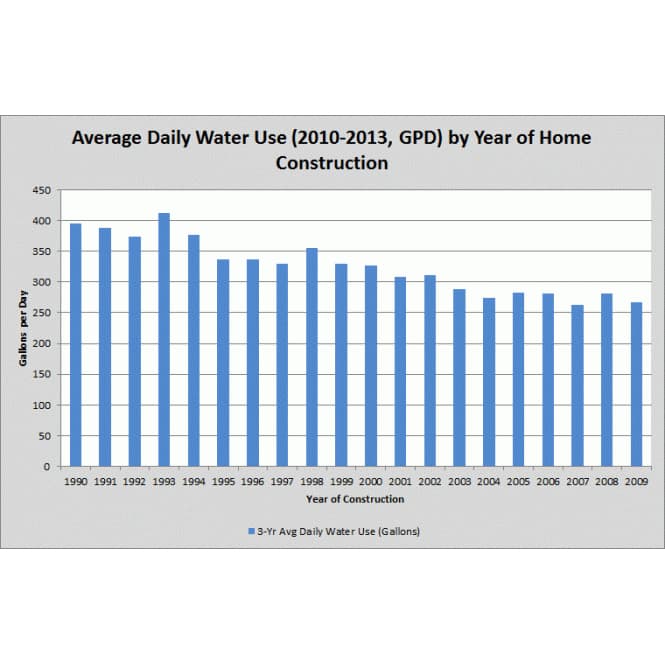AMWUA Blog
BY: Kathleen FerrisTime For Low-Flow Toilets To Take A Bow

Back when George H. W. Bush was president, the U.S. Congress passed a law that has helped the country conserve its water supply as we face drought and climate change. There was nothing glamorous about the law, but its impact was dramatic.
The law, written and championed by Massachusetts engineer Amy Vickers, changed the amount of water that could be used by toilets, faucets, urinals and showers that were manufactured after 1994.
The Standards
Here are the changes the law brought into American kitchens and bathrooms.
- New toilets are limited to a maximum of 1.6 gallons per flush, instead of the typical 3.5 to 5 gallons.
- New urinals are limited to a maximum of 1 gallon per flush, instead of the typical 1.5 to 5 gallons.
- New faucets and showerheads are limited to a maximum flow of 2.5 gallons per minute, instead of the typical 2.75 to 5 gallons per minute.
Japan and several Scandinavian countries had the standards in place for over 10 years before they became law in this country. About 15 states also made the standards mandatory before the federal law was passed, helping to create a groundswell of support for similar national standards. The standards were not popular with U.S. plumbing manufacturers and it took time for some to design and distribute high-performing fixtures that used less water.
The Results
Since the efficiency standards became law, research shows the United States saves 7 billion gallons of water a day. To put that in perspective, New York City uses about 1.1 billion gallons of water a day. So every day the new standards save enough water to equal the daily water consumption of six or seven cities the size of New York.
The law made a big difference in water conservation for growing cities such as Phoenix. About 128,000 homes in the City of Phoenix were built after the law went into effect. From 2010 through 2013, homes built in 2009 used an average of about 260 gallons per day while homes built between 1990 and 1994 used closer to 400 gallons.
Water fixture technology is advancing. Now, manufacturers, homebuilders, and trade associations are joining the U.S. Environmental Protection Agency’s voluntary WaterSense labeling program that promotes even greater efficiency while ensuring that fixtures meet high-performance standards. For example, toilets can now flush using 1.28 gallons of water and showers work with a flow rate of 2 gallons per minute. While these are still voluntary guidelines, some states already have made more stringent standards mandatory. Since the program’s inception in 2006, WaterSense has helped consumers save 757 billion gallons of water and over $14.2 billion in water and energy bills.
As technology reaches its limits on efficient indoor fixtures, attention is turning to more efficiency in outdoor water uses. In the Phoenix area, as much as 70 percent of a household’s water use is outside. That makes water efficiency standards for irrigation and sprinkler systems the next logical step.
For 45 years, Arizona Municipal Water Users Association has worked to protect our member cities’ ability to provide assured, safe and sustainable water supplies to their communities. For more water information visit www.amwua.org.
